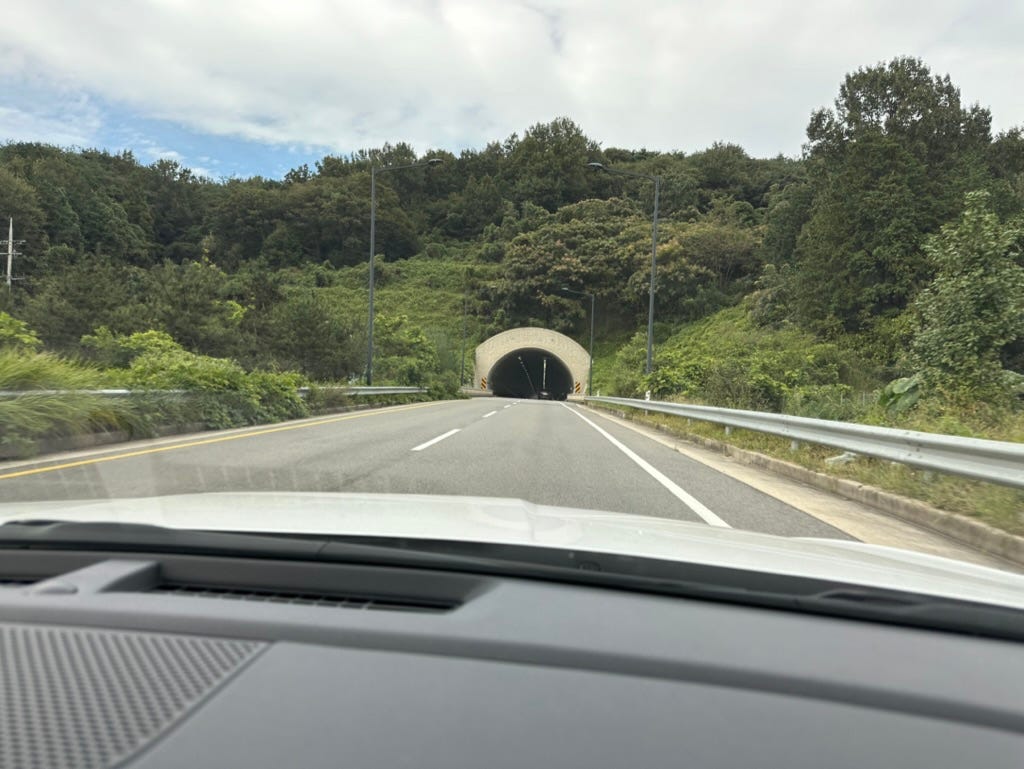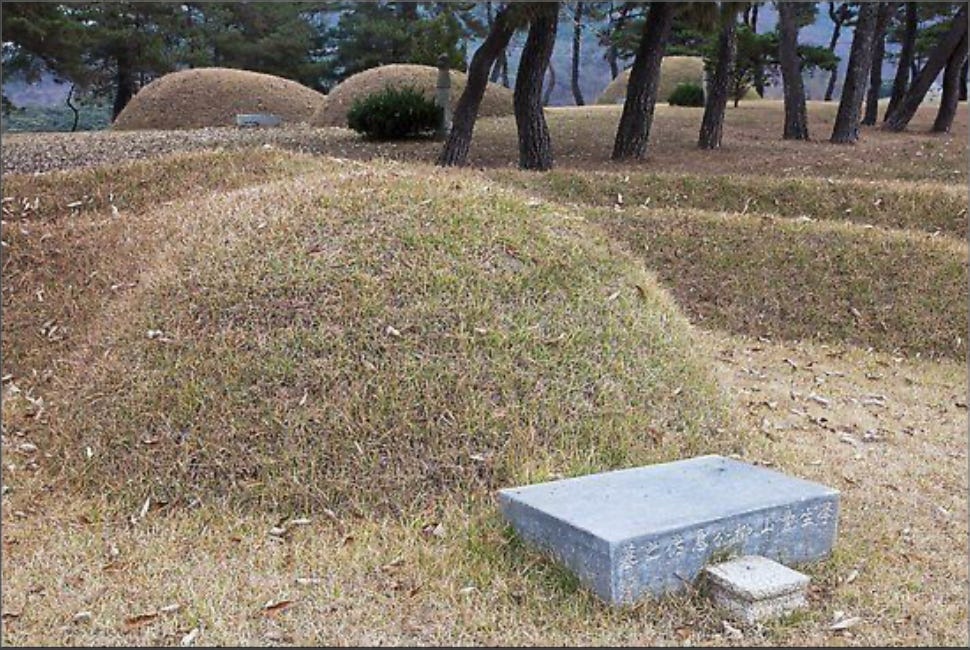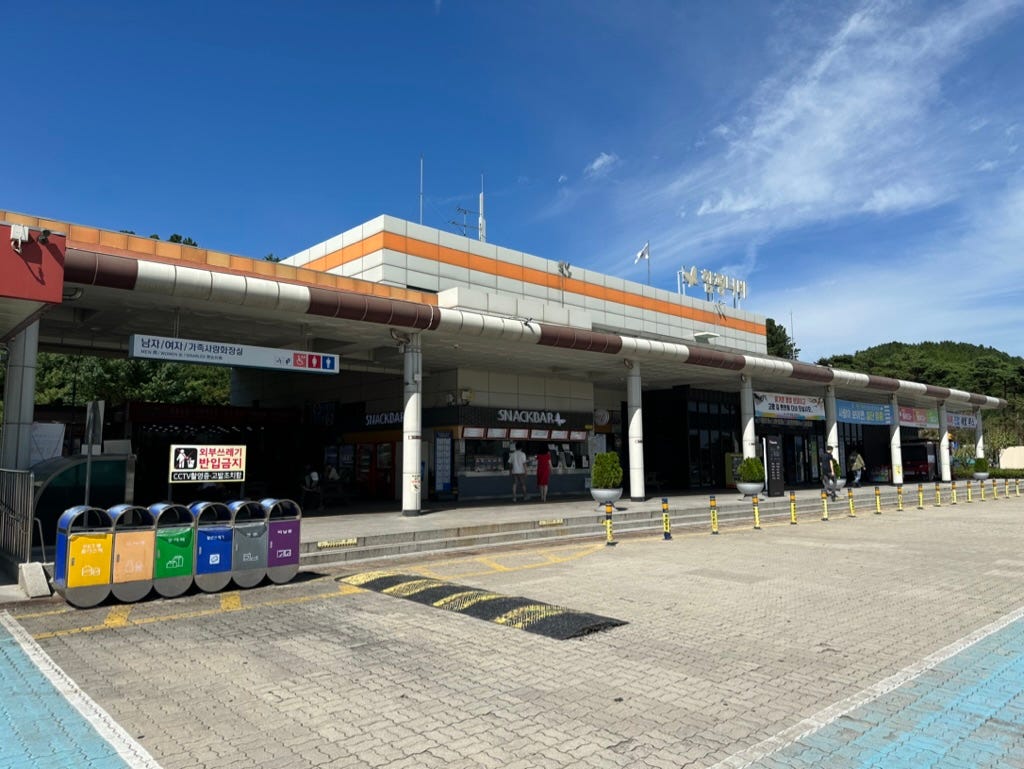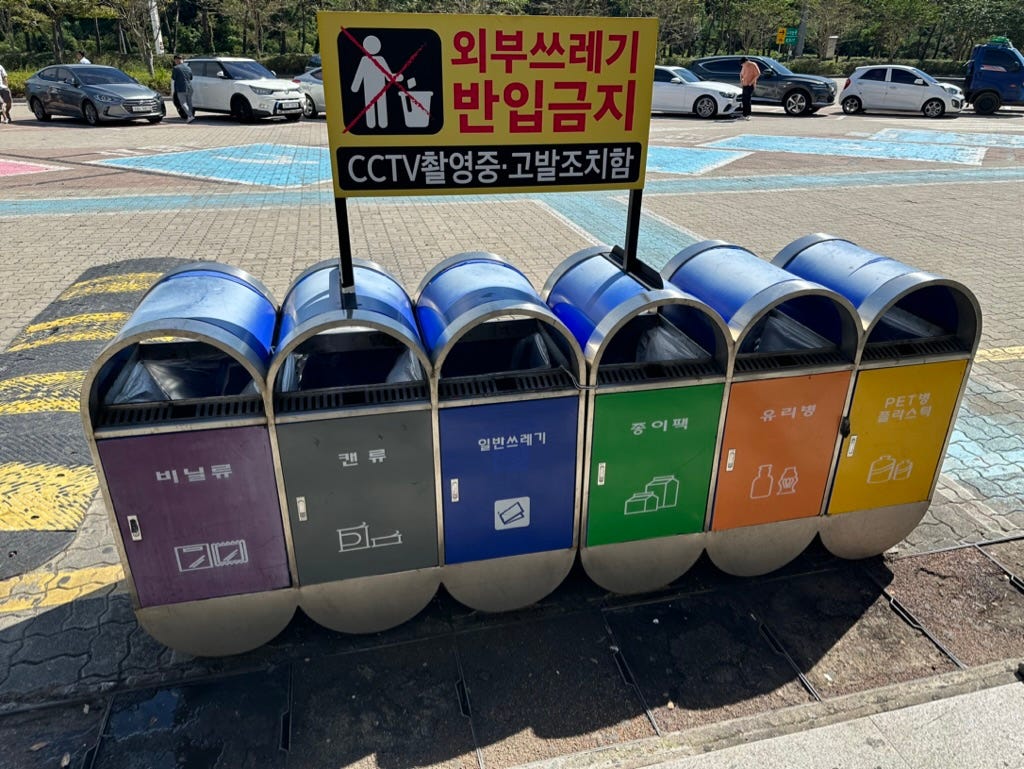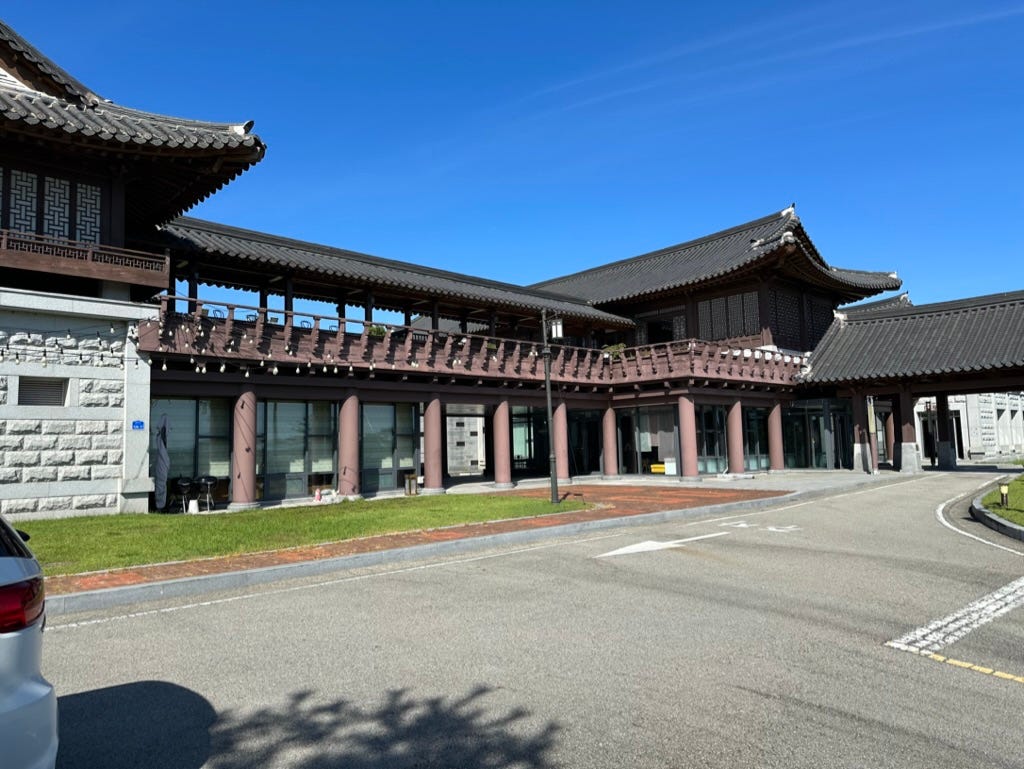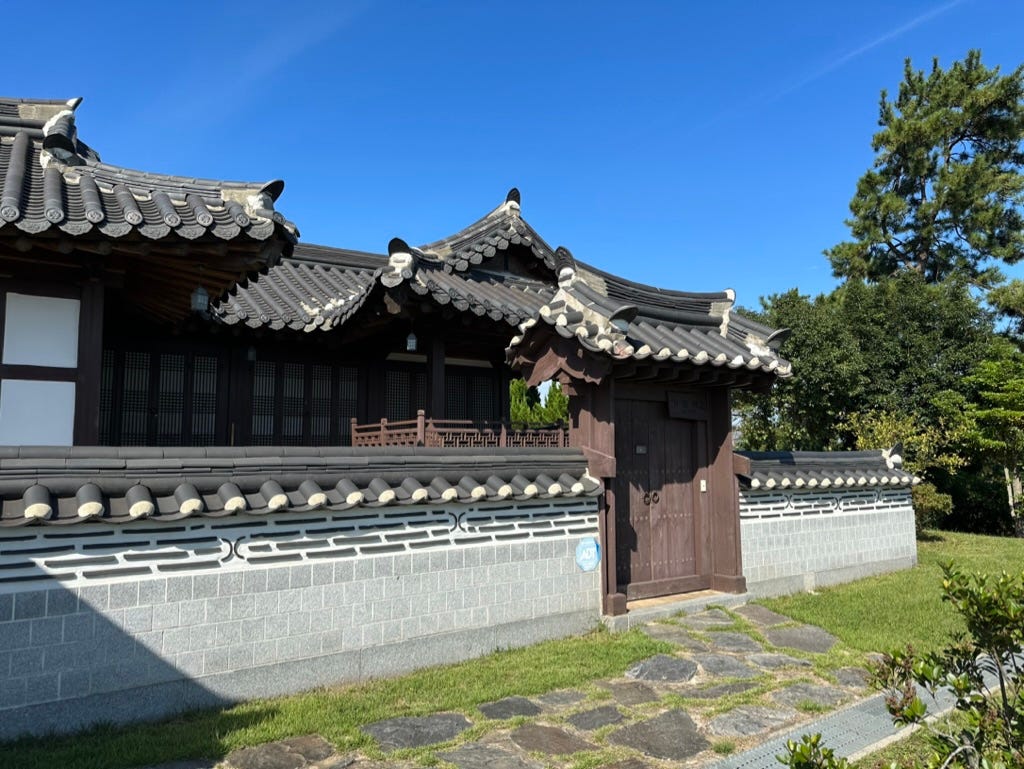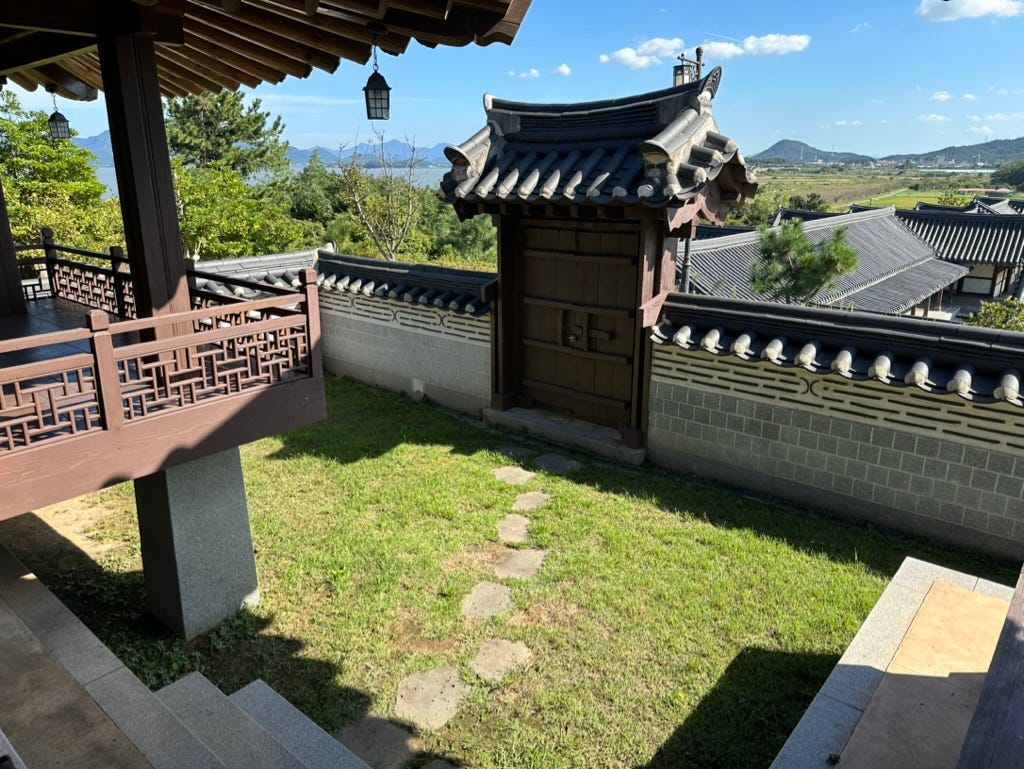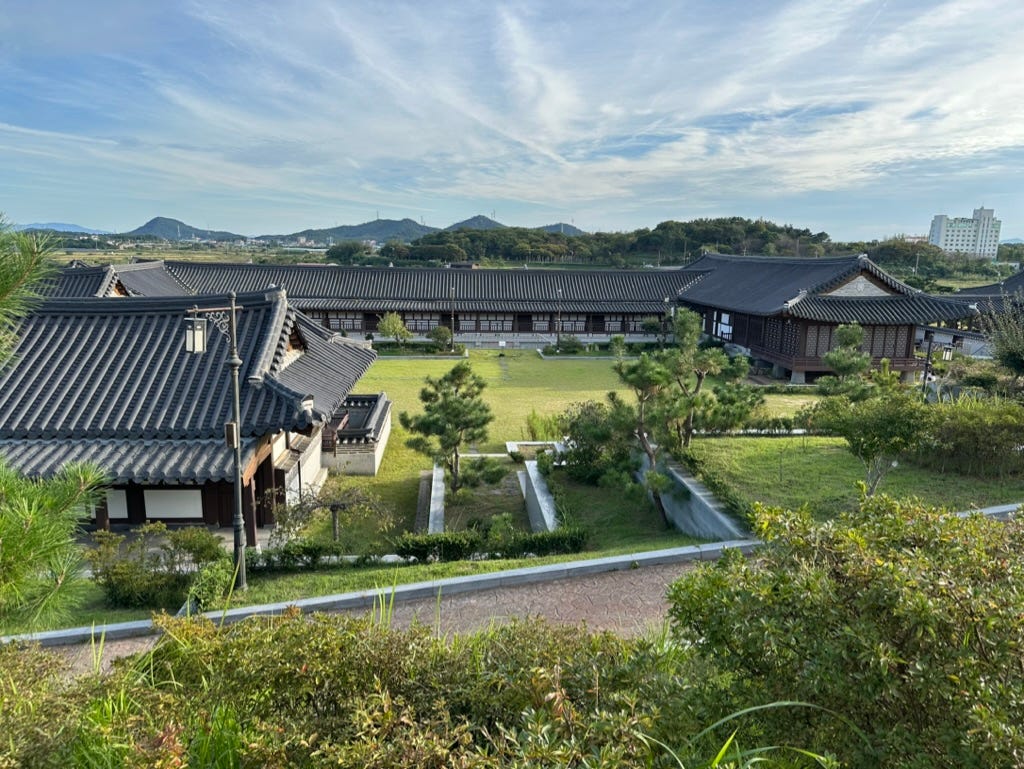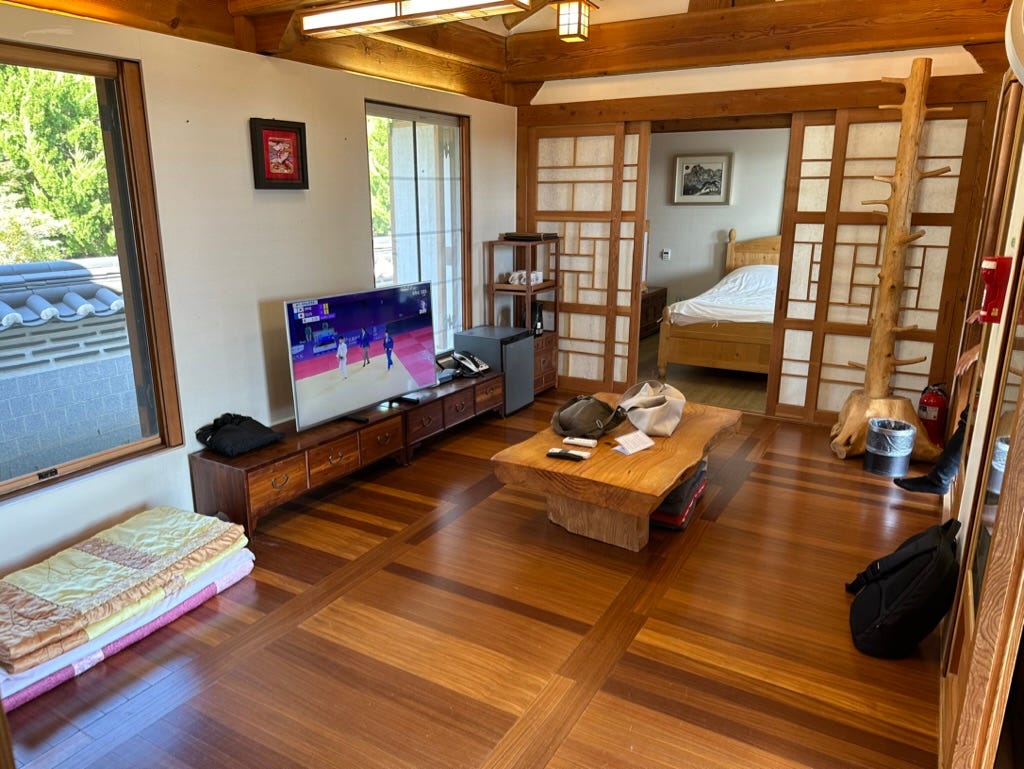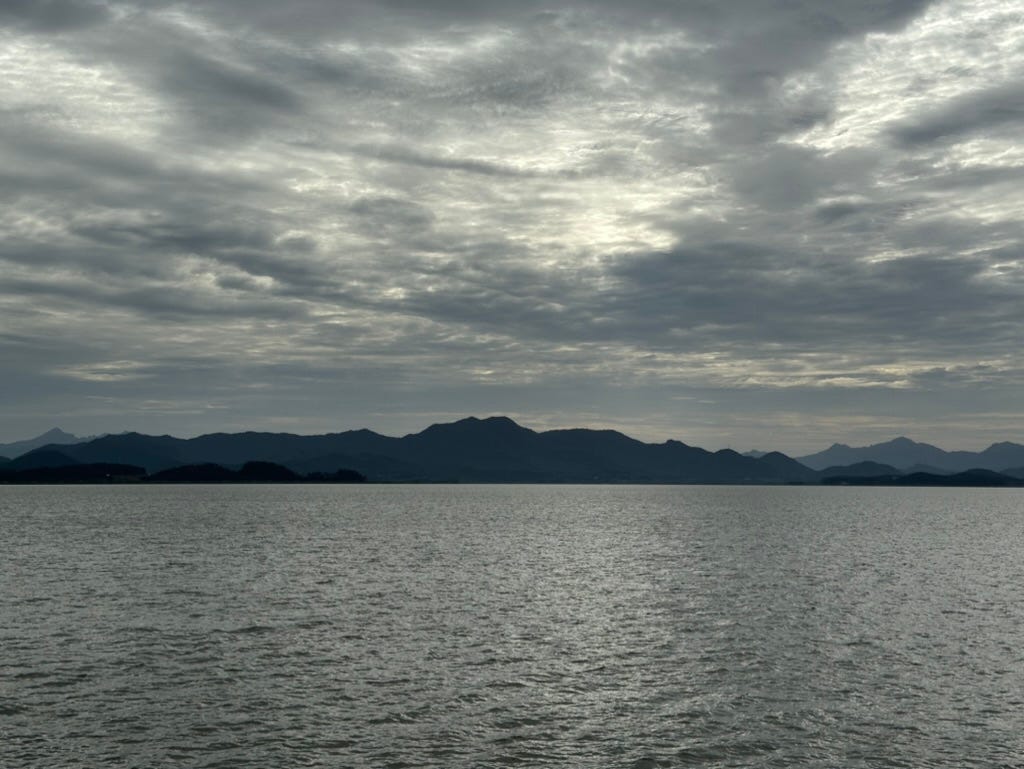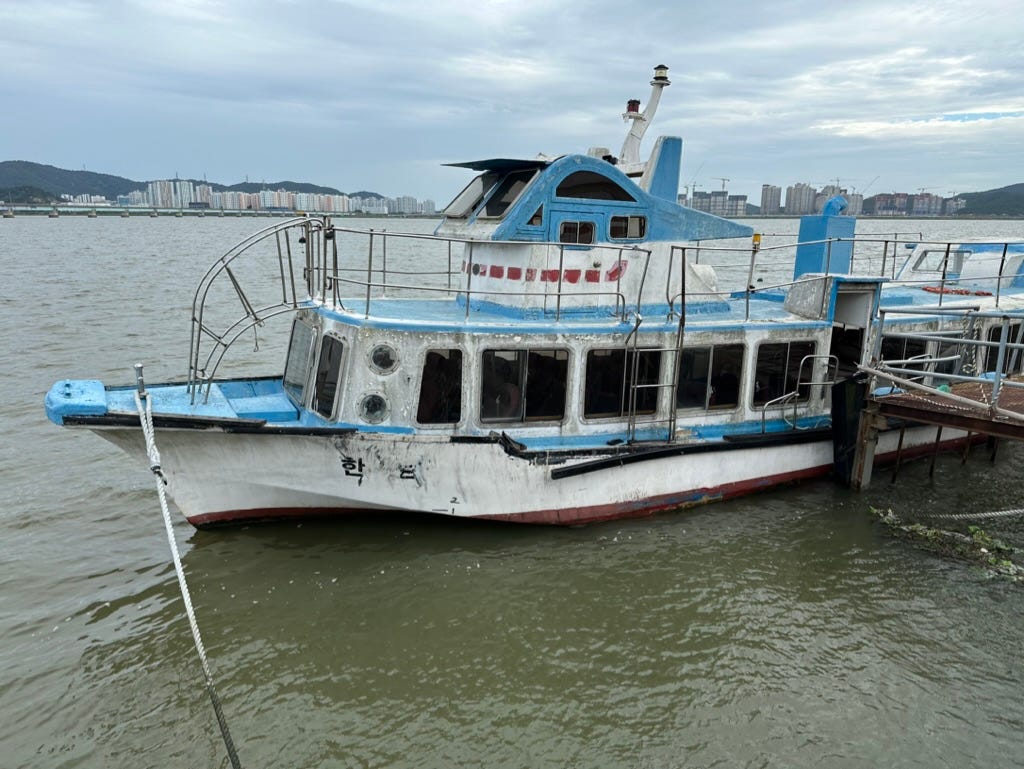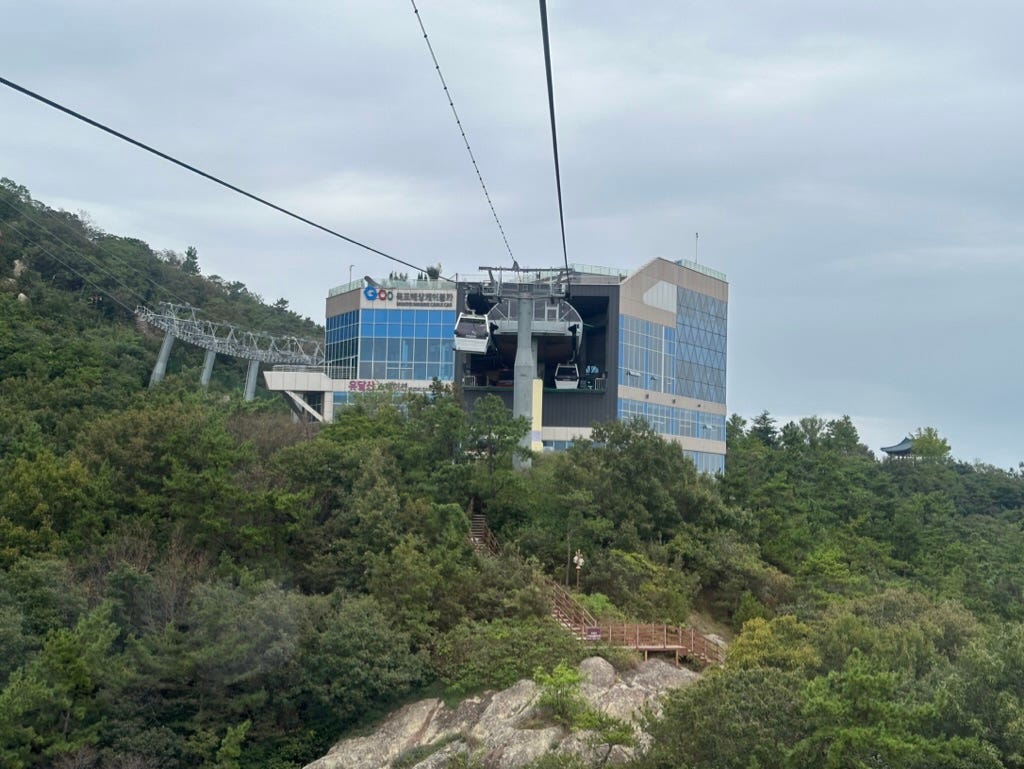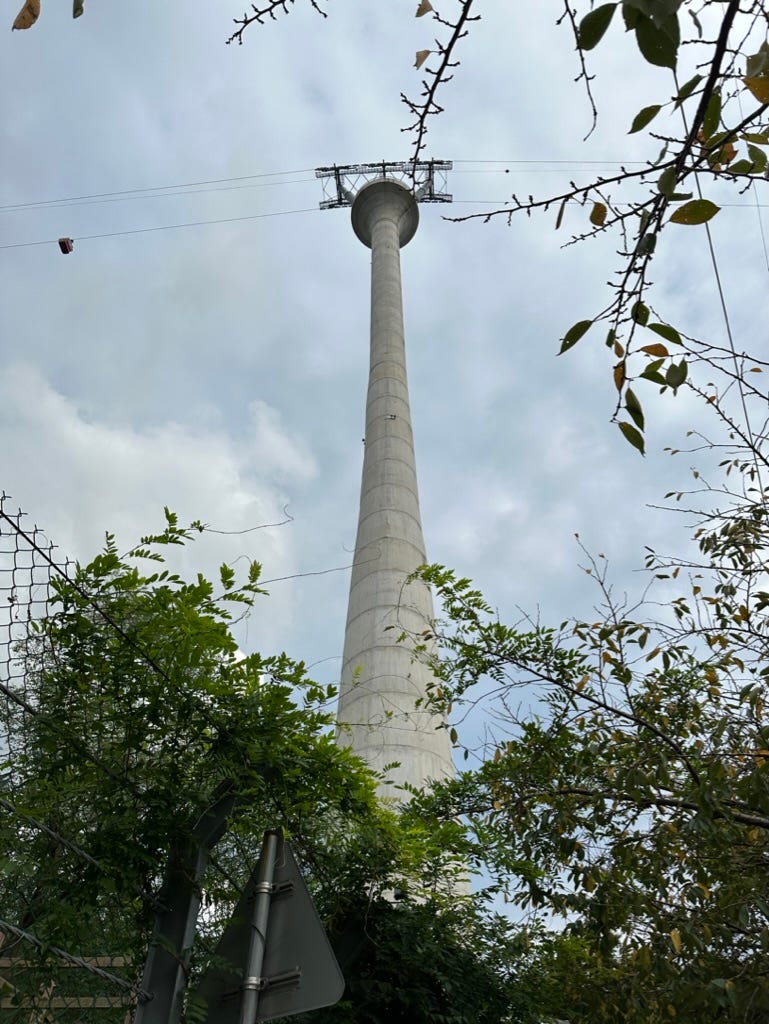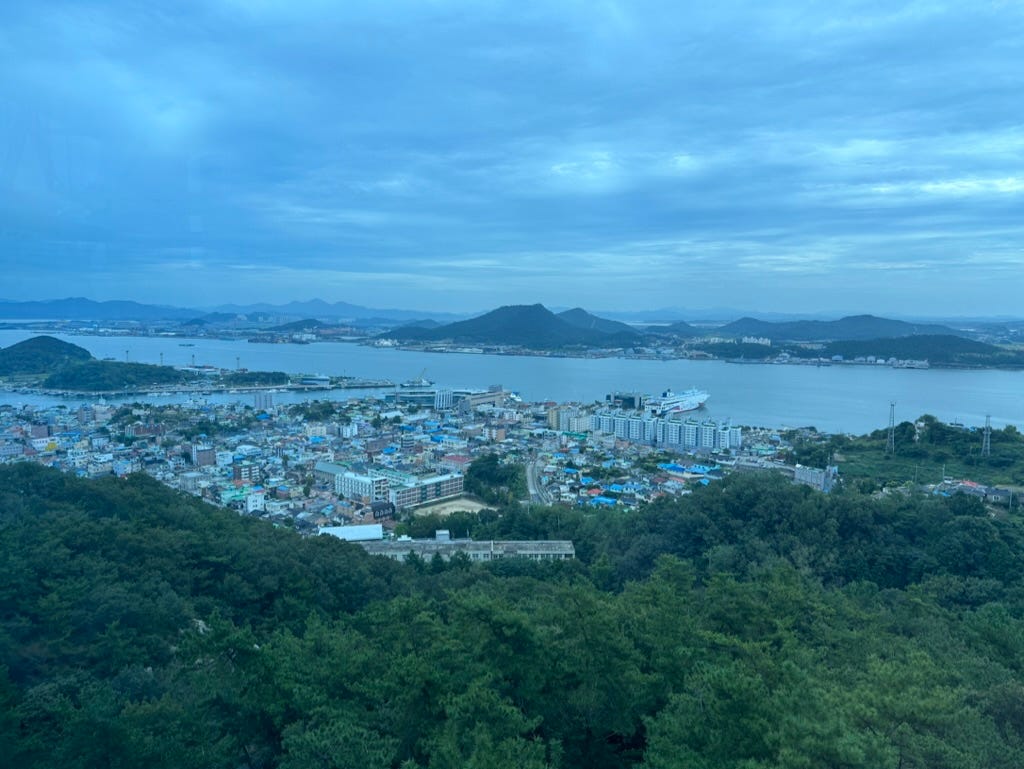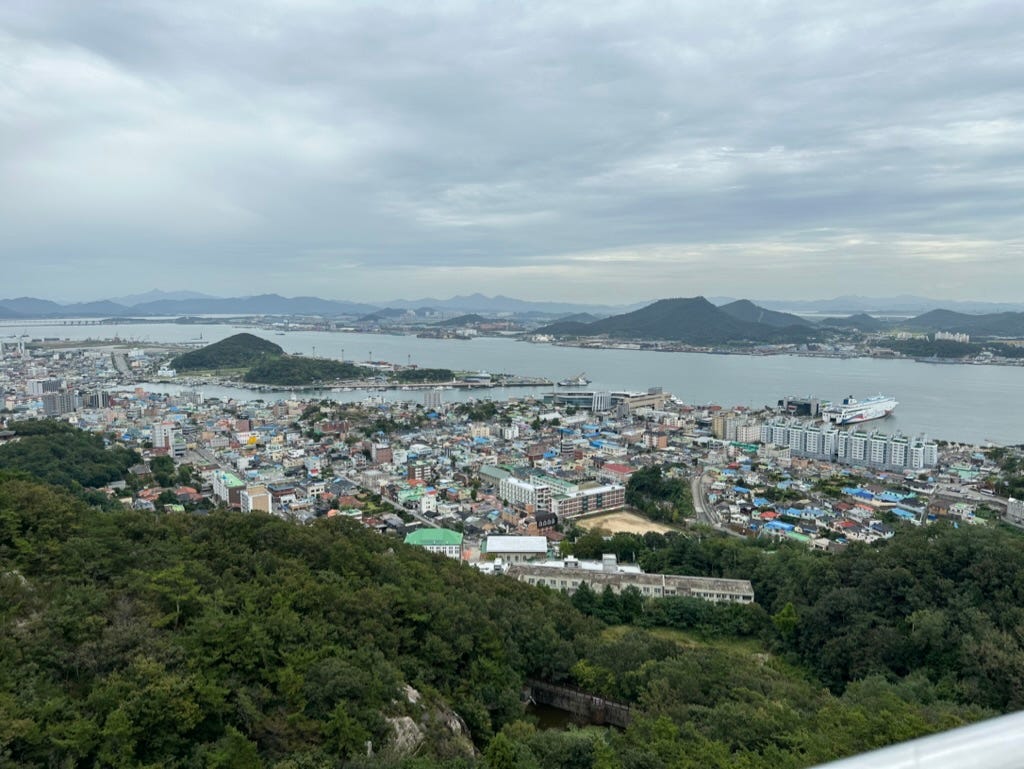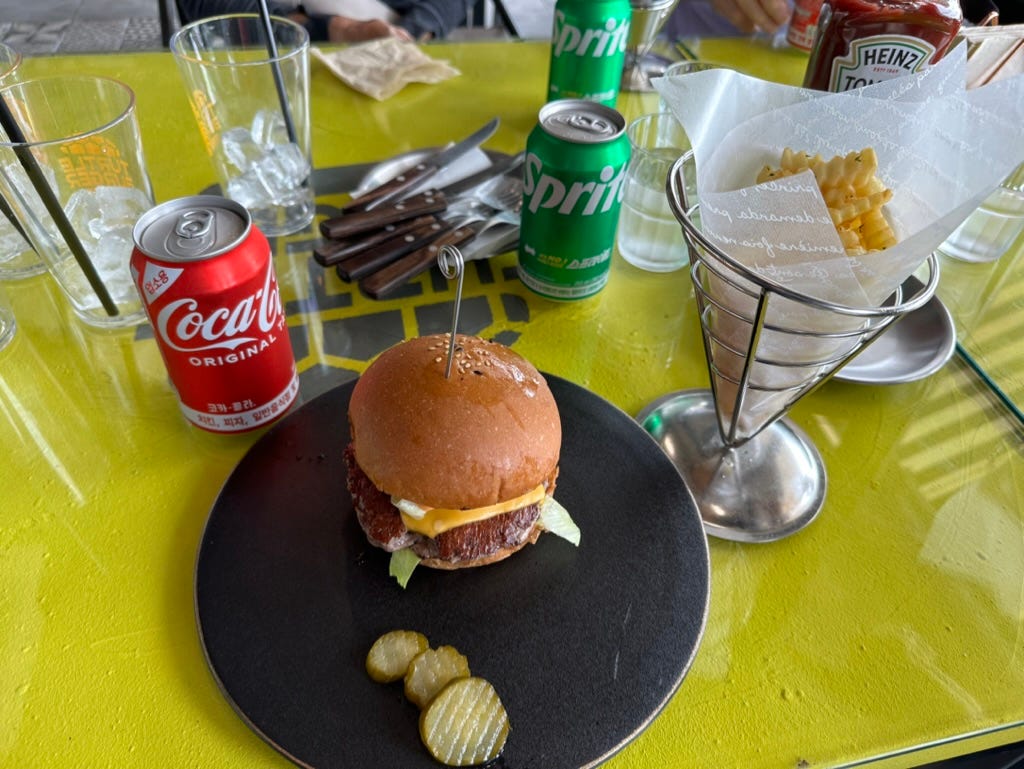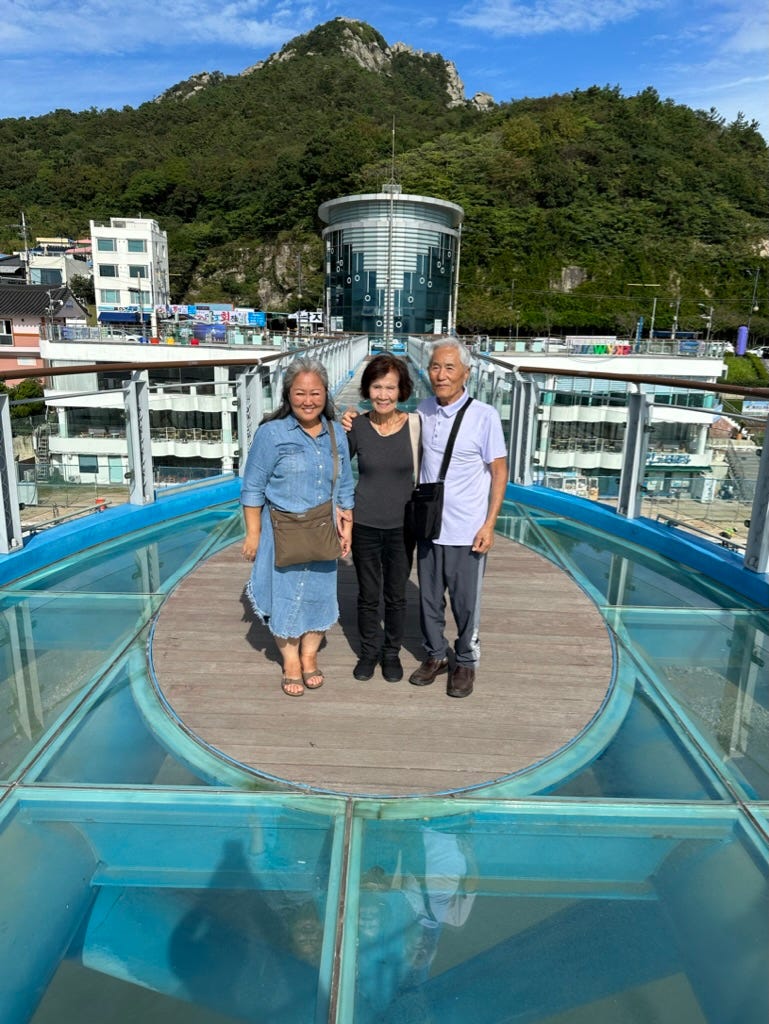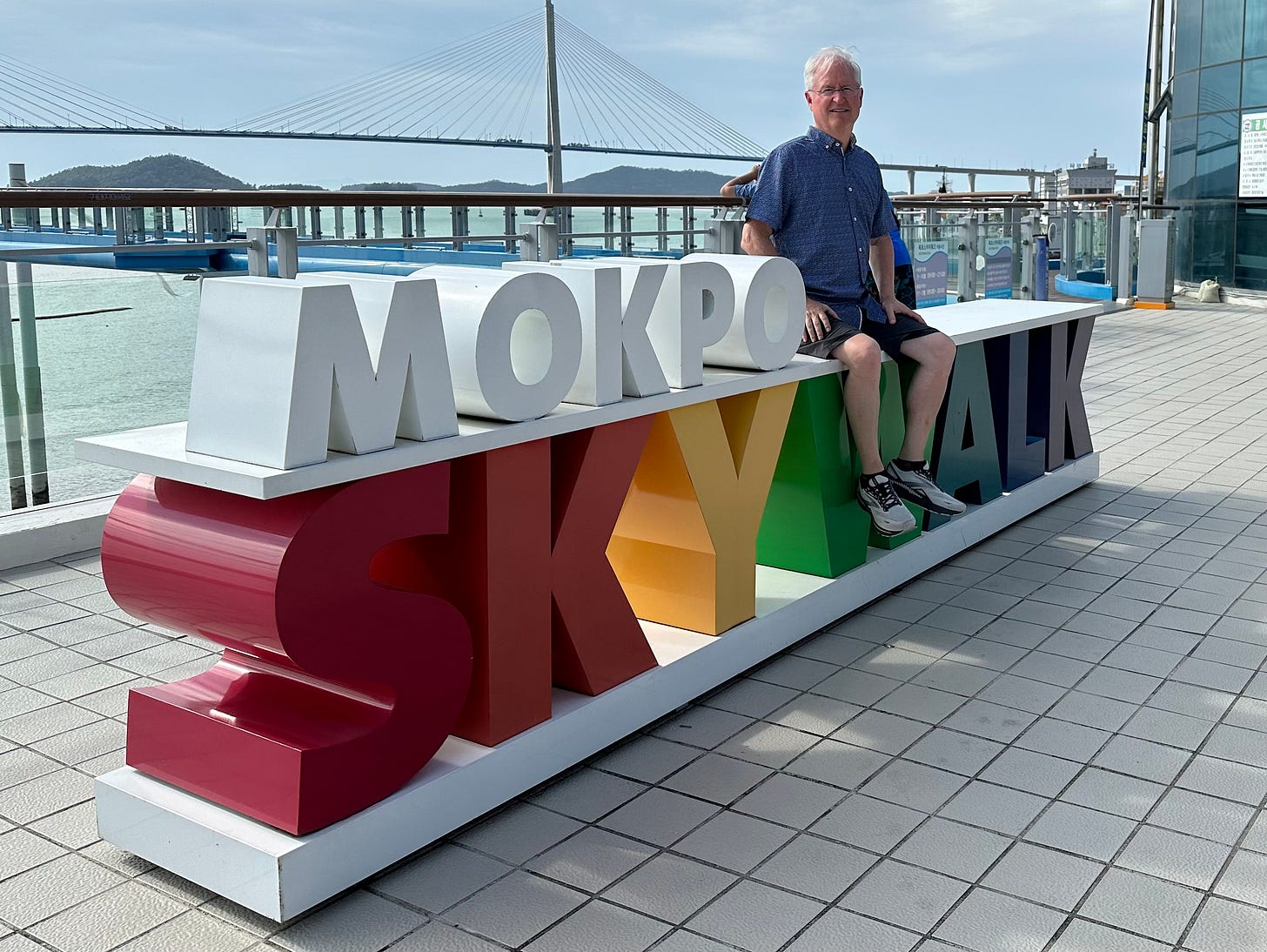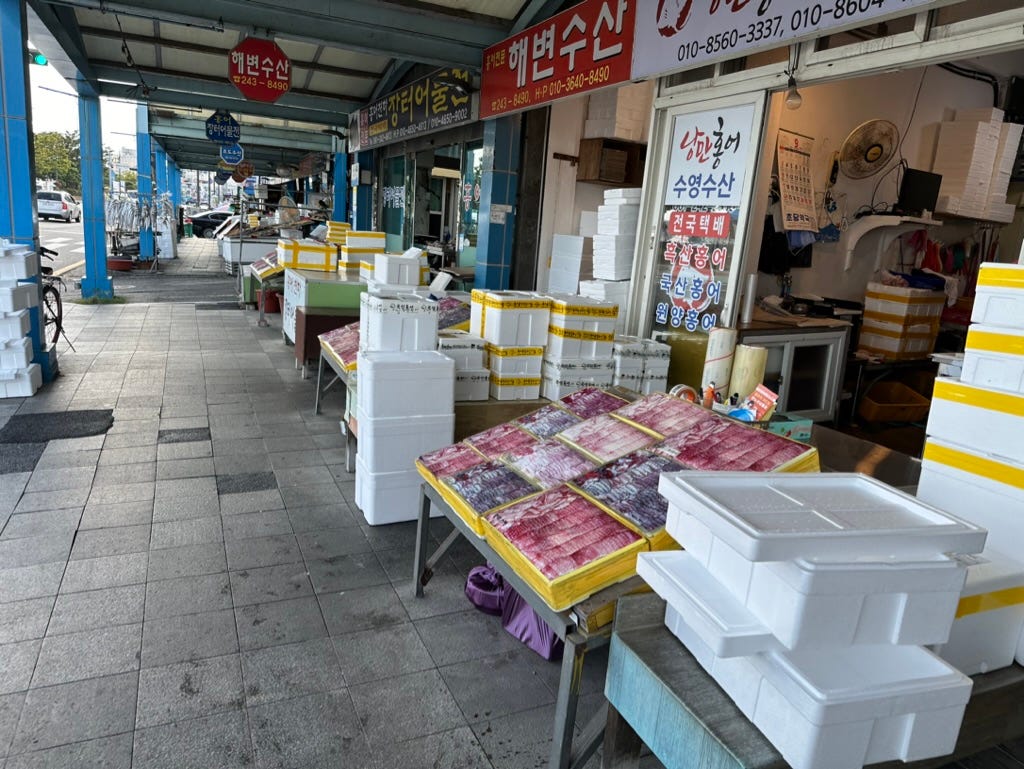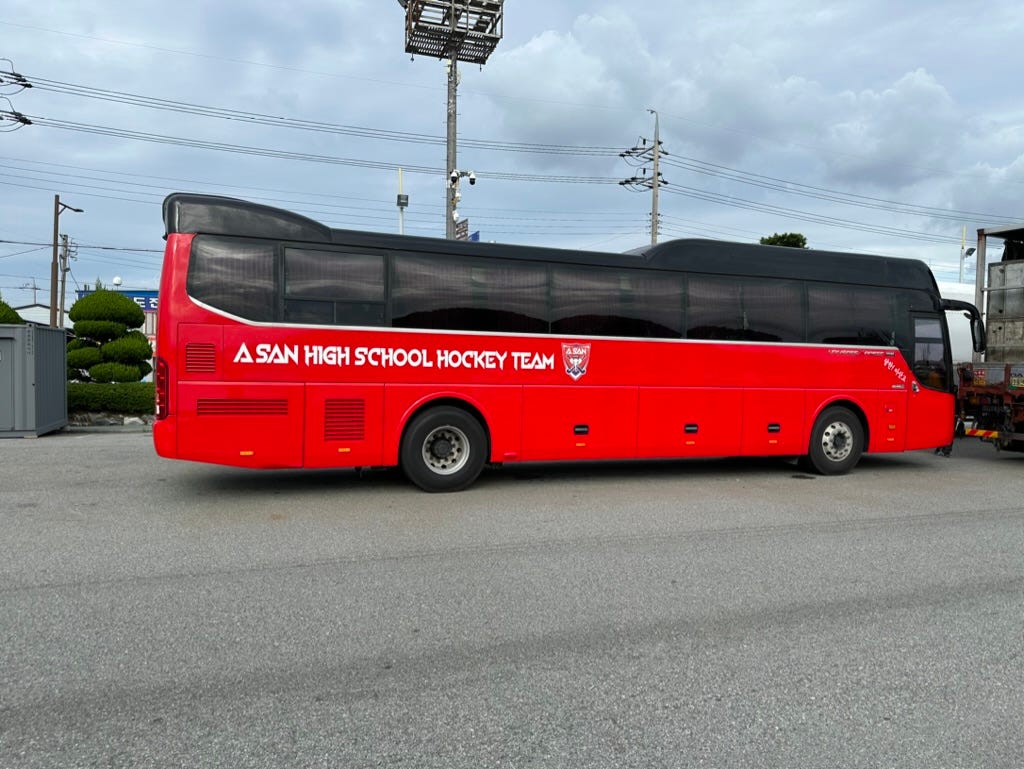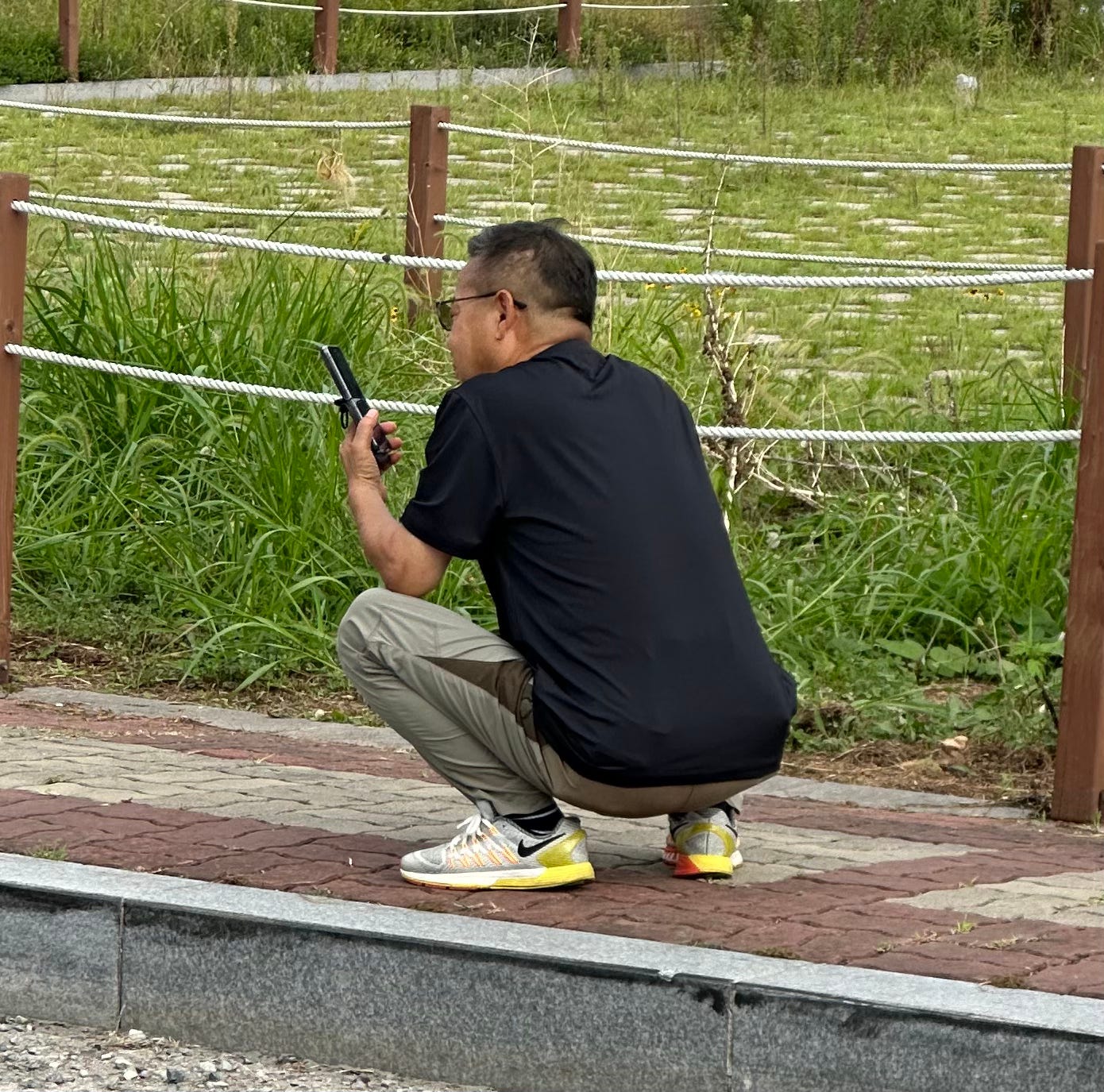South Korea - Chapter 12: Hanoks, Fish and Squatting
After a police escort and a single night in Sunchang, we got in the car to drive to our next destination about an hour away. Highways in South Korea are very nice. Instead of being nothing but a river of cars through a concrete jungle as is the case where I grew up in Southern California, they cut through green countryside and rolling hills, so many in fact, that tunnels are common.
Family cemeteries are common here and land near highways must be inexpensive because we saw many, usually with 4 to 6 plots, along the highway. Rather than a large headstone at one end and a flat, coffin-sized area demarcated in front of it, Korean family plots are often a large mound perhaps four feet side, eight feet long and three feet tall, covered in grass. I assumed the dead were buried above ground with the mound then covering them. However, when I asked Jeannie about this, she explained that the purpose of the mound was to give the mourners something they could throw themselves on to pound their fists and wail at the dearly departed as to why they had been so selfish as to leave them so soon.
There’s an annual holiday in Korea called Chuseok which is as close to a Thanksgiving holiday as Korea has. It’s three days and takes place in the middle of Autumn. For this holiday, people go to their hometowns to visit their families and to honor their ancestors. Typically someone will have visited the family plot ahead of time to mow and manicure it so that when the Chuseok holiday begins, it’s looking nice for the family coming to visit.
As we drove we went through a tollgate realizing too late that we did not have a tag that could be used to pay the toll. We assumed that the rental car company would get charged and then charge us. As we drove along, I looked this up online to find that you pay as you exit which of course makes person sense. However, if you don’t have a tag and associated account, you are supposed to make note of which toll gate you first entered and of course we did not do that. When we finally arrived at the exit gate, we found the lane for paying cash/card. We were not sure how much to pay but fortunately there was a big red button to press for help. This resulted in a screen coming on where the friendly face of a toll gate attendant appeared to explain to us that as we passed through the entrance gate, the system had taken a picture of our license plate so she could look up where we entered and tell us how much to pay. Brilliant.
Continuing on we came across a rest stop along the highway. If you’ve ever been to a Bucee’s in Texas, this was a smaller version of that.
I didn’t take a picture of it but there was an actual Ford F150 pickup truck in the parking lot. It was the first American pickup truck I have seen since we arrived in Korea. In Texas it’s very difficult not to see one. The rest stop had a store that sold all those things one might need while traveling and forgot at home. There was a snack bar with an outdoor seating area, and inside, a food court with what looked like pretty good Korean food though we did not try it. The six different colored canisters show you just how seriously recycling is taken here.
At one end of the parking lot was an electric car charging station.
At the other end were stations for cars that run on regular gasoline and LPG (Liquid Propane Gas). So no matter what fuels your car, they’ve got you covered.
Back on the road, we headed for the city of Mokpo which is another seaside city with a very large harbor and a population of just over 200,000 though it looks much bigger. As I have mentioned before, a traditional Korean home is called a Hanok. They are actually pretty amazing considering they were first designed and built in the 14th century and much of the original design is in use today. They can be assembled without nails and are well-insulated. Because summers here can be hot and winters cold (depending on where you live), specific rooms are designed to keep the occupants cool in the summer while others keep you warm in the winter. For the latter, the foundation is build with channels and a furnace at one end. This allows these rooms to have heated flooring, an impressive invention considering how old the design is. Our stay in Mokpo would be at a Hanok hotel.
I had thought we would be getting hotel rooms that were designed and built in the spirit of hanoks. Instead, while those were available, we had rented a two bedroom hanok itself that is a stand-alone until but is part of the hotel.
It had its own gate that opened into a small front yard and a nice patio.
We had a nice view of the lower part of the hotel from there.
Inside was the main living room with bedrooms at either end.
The windows and doors are covered in parchment to allow airflow with an additional set of doors that can be closed when extra protection from the elements is needed.
If you’re noticing that there are no chairs or a couch, that’s because there are none. Not a single one anywhere in the house. In a hanok you sit on the floor. This seemed like a cool cultural experience at first. I’m sure that if I had grown up sitting on the floor as so many Koreans of my in-laws generation and earlier had, I would have no issue with this. However, after about 15 minutes my back began to remind me that my history did not include this kind of training. I ended up sitting against the wall and standing quite a bit. While one bedroom had an actual bed with an actual mattress, the other had the more traditional style where the bedding is placed directly on the floor itself. That’s the room Jeannie and I stayed in. As uncomfortable as that may sound, sleeping on the floor is not bad except that for Jeannie she had to sleep on her side to be comfortable while I had to sleep on my back. Regardless, it was an interesting experience to be sure.
We went for a walk and found ourselves near one of the many harbors.
We came across a small ferry boat that clearly had not be in service for a very long time. Jeannie and I simultaneously thought that if there were zombies, this is where they would be hiding. There is no Z sound in Korean so they pronounce it, Chombie. I actually like this pronunciation perhaps because it sounds similar to chomp which makes it almost an onomatopoeia.
Like Yeosun, Mokpo has a cable car system that gives you a great view of the city and harbors. In fact, it’s the longest cable car system in South Korea.
I could tell that my Mother-In-Law really appreciated it when I let her know that as we passed the top of this tower, we were just over 420 feet in the air.
I took another picture later on from the base of that tower which even better illustrates its height. Notice how tiny the cable car is on the left.
We bought round trip tickets so when we arrived at the other end, we went looking for a place to have lunch. There weren’t many choices in the area and I really needed to have something other than Korean food. Fortunately, there was a local burger place called Turtle Burger. While I hoped the name did not inform as to the nature of the meat used to create said burgers, honestly I was at the point where I didn't care all that much. As has been common, we ordered from a kiosk making it possible for there to be a single employee to run the entire operation. A few minutes later he delivered an ice-cold Coke, crinkle-cut french fries and a very tasty burger. I was in heaven. Even the music playing in the place (lots of Bruno Mars hits) was good.
My in-laws had gone off on their own to explore the Korean food options but showed up far too soon to have eaten. As it turned out, what they found was either not to their liking or not open. I took the opportunity to explain that I don’t really have burgers nearly this often back home. I have also been drinking a lot of soda here because we have really good RO water at home and the bottled water in Korea is pretty average and thus not to my taste. If I’m going to have a flavored liquid, I prefer Coke over plastic.
Quite satisfied, we headed for another sightseeing spot I had found called the Skywalk. From the name, it sounded really great. Would there be a Star Wars tie-in? Would traversing it make me a Skywalker? Unfortunately, it doesn’t really deliver much. It’s basically a plexiglass walkway stretching about 150 feet out over the water.
That didn’t stop us from taking a picture.
We found our way down to the part of the harbor where the fishing industry does its work because of course my Mother-In-Law wanted to see the local market. It was a seafood market like all the other seafood markets we explored. However, I did learn the answer to one question I still had. I just could not believe that they sold all that fish locally each day. It just didn’t seem possible that there were enough residents in the area. As it turns out, I was right. At some point during the day, the endless seafood vendors pack up whatever is left into styrofoam crates filled with ice and sell them in bulk to a company that carts them off to other big cities to sell to restaurants and such.
Seeing all the fishing boats and watching the fisherman doing the work they do repairing their nets and such at the end of the day was a reminder that fishing is very hard work.
In fact, the fishing boats while owned by Koreans, are for the most part run by people who are Vietnamese. This explained the Vietnamese restaurant right near the boats. The Vietnamese will work hard for a lot less than Koreans will. Essentially, Vietnam is the Mexico of Korea.
Inexplicably, near the harbor was parked a bus belonging to what appeared to be a local high school’s ice hockey team.
This raised more questions than it answered. What is this bus doing at a fishing harbor? How can a high school ice hockey team be so good as to afford their own bus? Do they even play ice hockey at the high school level in Korea? I mean, in Canada, sure. But Korea? We found no driver nor fishing high school ice hockey players fishing nearby so the answers to those questions will remain a mystery.
There is another Asian cultural phenomena I have been waiting to describe but had not yet had the chance to photograph until now: the Asian Squat. In Asia, when one needs to relax but finds there’s nothing to lean against and one does not want to sit on the ground (remember this is a culture where you don’t wear shoes in the house), you do the Asian Squat as this guy is demonstrating while watching YouTube.
Now you’re probably wondering what the big deal is here. He’s just squatting after all. I’m sure you can do it. So can I but not the way he’s doing it. What’s different? Notice that his toes and heals are both flat on the ground. I’d be willing to bet that when you squat, you rest on the balls of your feet with your heels in the air. You probably have never thought about it. I never had. If you didn’t grow up doing this, you haven't stretched the right tendons and such to be able to get both heel and toe on the ground in a squatting position. Given that I know you’re now anxious to try this, go ahead. I’ll wait.
You fell over, right? I was just as surprised by this as you are. It’s one of those things that people growing up in Asia learn as kids and continue to do throughout their lives. Jeannie can do it. I’d bet my in-laws, even in their 80s, can do it. I have seen many people doing this all over South Korea.
And so ended our stay in Mokpo. The next morning we would be packing up to head out for our last stop before we leave South Korea, a return to Seoul.

